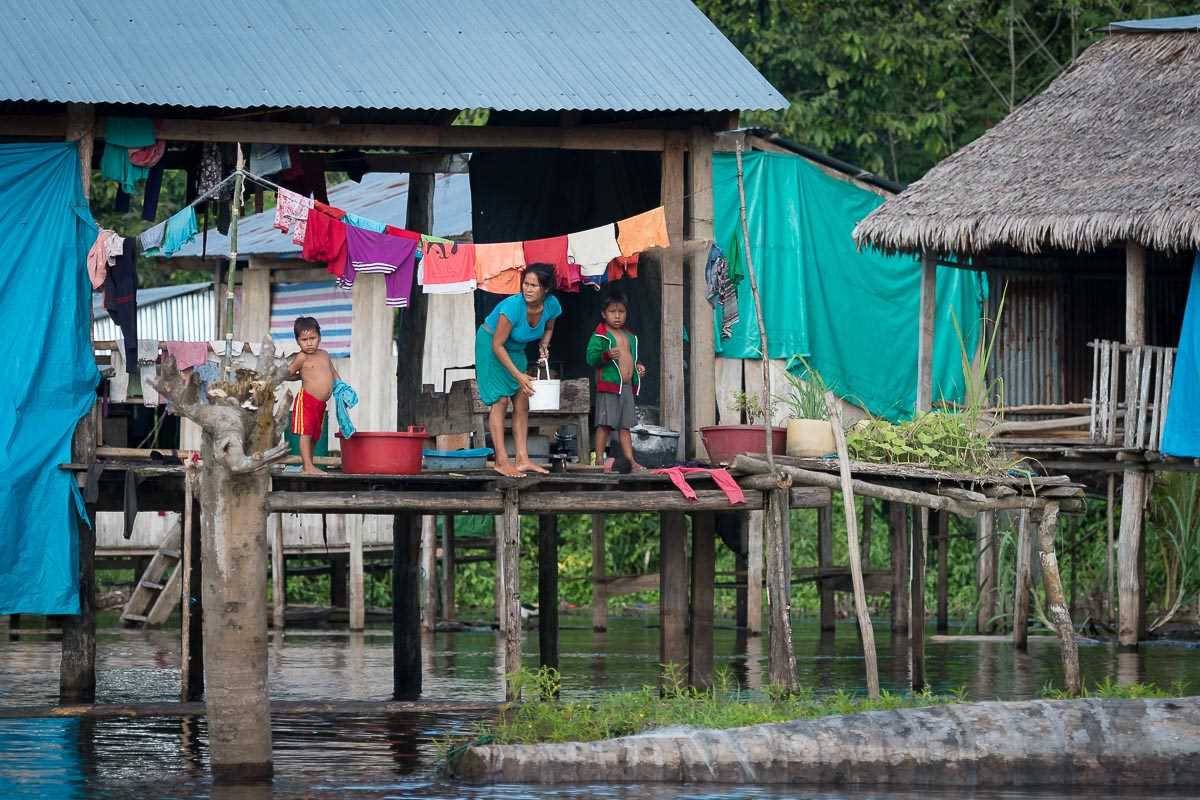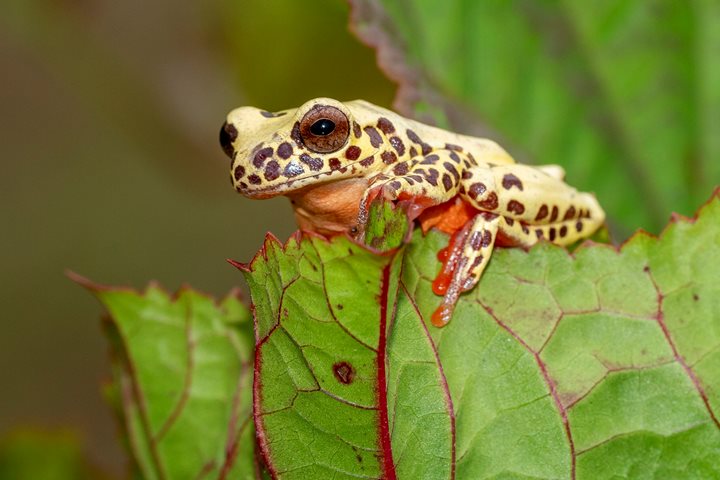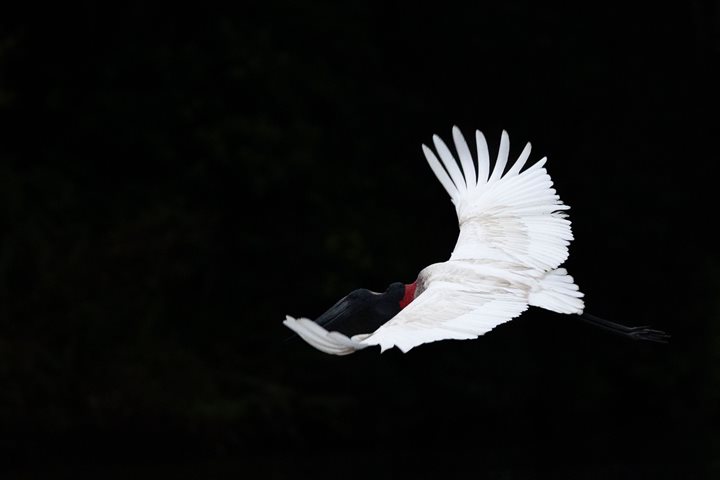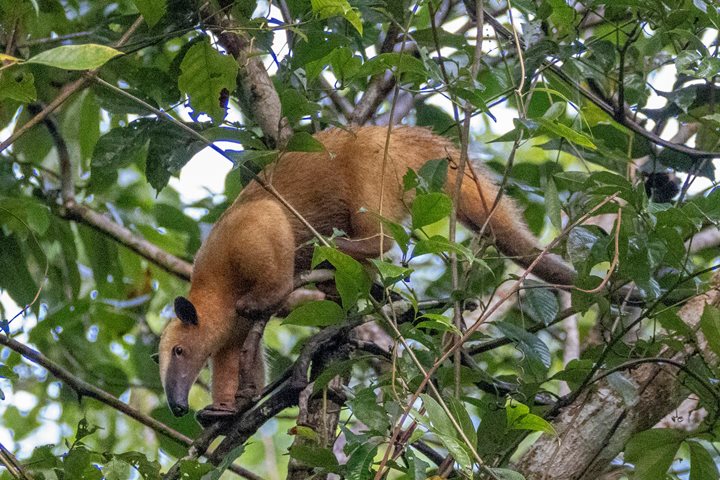Our day started with a gentle rain, as is typical in the Amazon region. Our early risers were ready to explore before breakfast, so we headed out to explore the Ucayali River and a small creek called Yanalpa. Our guest explorers were fortunate and spotted some of the more elusive creatures of this area, including the red-bellied macaws and the endemic species of saki monkeys, called Isabel’s saki monkey.
After breakfast, we explored Belluda Creek by kayaks and skiffs. The varcea forest along the creek provides shelter to interesting animals like owl night monkeys, caiman lizards, yellow crown brush tail rats and sloths.
Our afternoon activity was concentrated in the Dorado River. A small community at the mouth of the river welcomed us as we passed by inviting us to see the different species of fish they had caught. We continued to explore this river until dusk, when our naturalist brought out the spotlights. We enjoyed the sightings of the evening creatures that dwell on this river.







